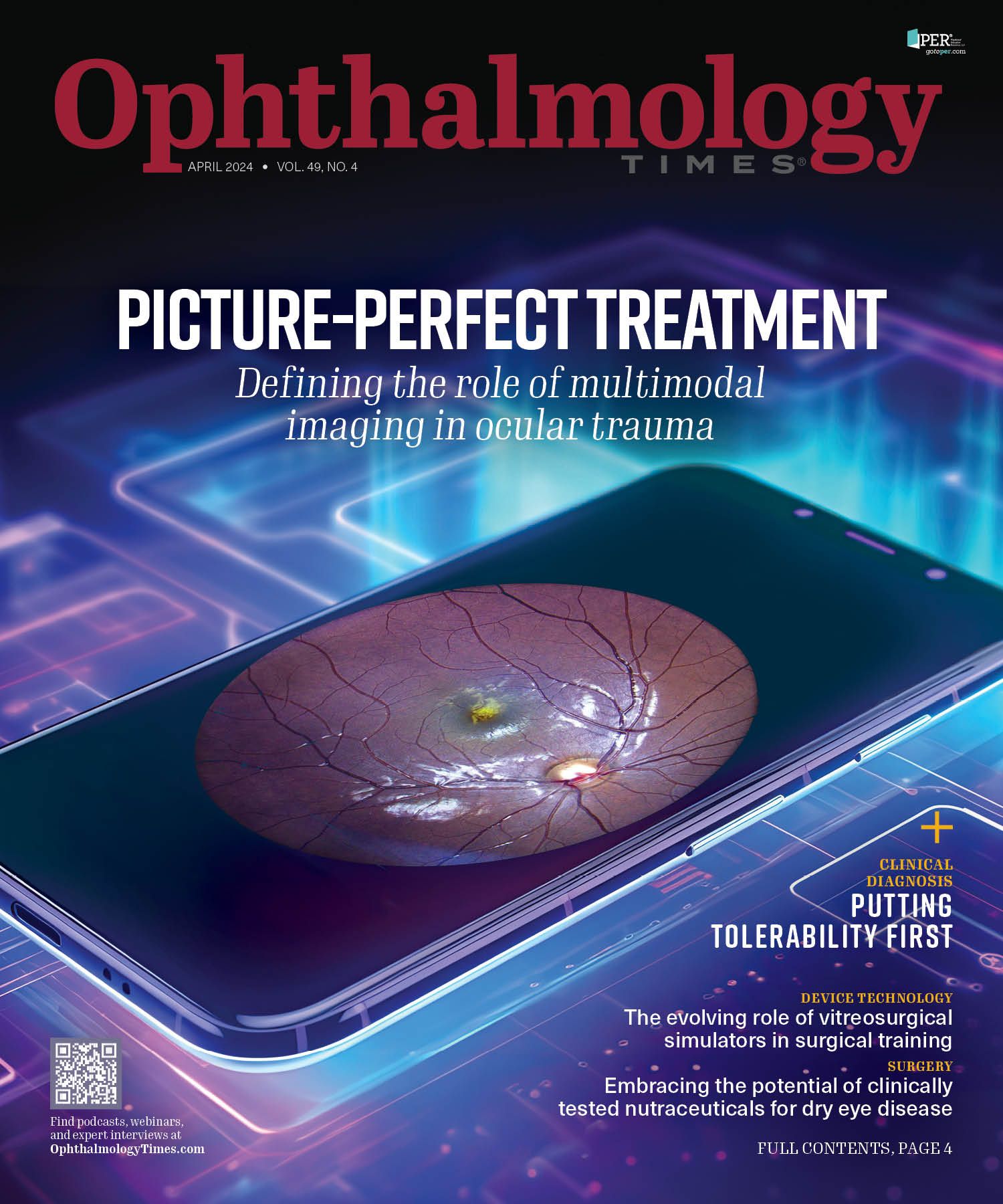- COVID-19
- Biosimilars
- Cataract Therapeutics
- DME
- Gene Therapy
- Workplace
- Ptosis
- Optic Relief
- Imaging
- Geographic Atrophy
- AMD
- Presbyopia
- Ocular Surface Disease
- Practice Management
- Pediatrics
- Surgery
- Therapeutics
- Optometry
- Retina
- Cataract
- Pharmacy
- IOL
- Dry Eye
- Understanding Antibiotic Resistance
- Refractive
- Cornea
- Glaucoma
- OCT
- Ocular Allergy
- Clinical Diagnosis
- Technology
Using extracellular vesicles in the treatment of ocular diseases
Shift could lead to changes in the current management of retinal diseases
(Image Credit: AdobeStock/KS Kim)

Nanoscale extracellular vesicles (EVs) that include exomers, exosomes, and microvesicles/ectosomes are thought to have a future in the treatment of degenerative retinal diseases,1 according to a team of European researchers led by Federico Manai, MD, Department of Biology and Biotechnology “L. Spallanzani,” University of Pavia, Italy.
The researchers explained that EVs, which are lipid bilayer-delimited particles that almost all cells release, have a number of functions and are involved in transferring lipids, nucleic acids, and proteins from donor to recipient cells or distant organs and regulating cell-cell communication and signaling. These activities make EVs important in intercellular communication which includes mediating the cross-talk between different cell types, even over long distances.
In addition, the investigators explained that the EVs are crucial in cellular homeostasis and disease pathogenesis, and because the content of the EVs reflect the donor cell status, the EVs can provide valuable information about complex biologic processes.
“Recent advances in isolation and analytical methods have led to substantial improvements in both characterizing and engineering EVs, leading to their use either as novel biomarkers for disease diagnosis/prognosis or even as novel therapies. Due to their capacity to carry biomolecules, various EV-based therapeutic applications have been devised for several pathological conditions including eye diseases,” the authors said.
EVs in the eye
Regarding the eye, EVs have been found in the retina, aqueous humor, vitreous body, and tears. Experiences with other forms of intraocular drug applications have opened new ways to use EVs to treat retinal diseases. The researchers reviewed the extensive research into EVs in age-related macular degeneration (AMD), diabetic retinopathy (DR), glaucoma, retinitis pigmentosa (RP), and other retinopathies and enumerated the extensive published results. They described in great detail the physiological and pathological role of EVs in the cellular communication in the eye and the roles of EVs in those retinal pathological processes and diseases.
The bottom line is that the EVs may have potential beneficial properties as therapeutic agents in in retinal pathologies. Manai and colleagues noted that in ophthalmology, among the first evidence that this may be the case was from the use of an αB-crystallin–derived peptide engineered into a polymer nanoparticle to rescue stressed retinal pigment epithelium (RPE),2 and a similar approach enhanced delivery of lipophilic compounds with engineered liposomes to improve retinal penetration,3,4 circumventing the issues involved in ocular drug delivery.
The investigators also cited an in vitro study showing that exosomes affected the pharmacokinetics of bevacizumab (Avastin; Genentech), which is internalized and secreted by RPE cells through CD63+ vesicles.5
A great deal of research has been reported about the beneficial role of EVs derived from mesenchymal stem cells (MSCs) in different pathological scenarios such as conferring protective effects on retinal ganglion cells in a model of laser-induced retinal injury6 that prevented apoptosis and inflammation6; the mechanism was through a decrease in the MCP-1 level.
Most evidence in the literature, according to Manai and colleagues, shows the beneficial effects of MSC-EVs in diabetes/DR or hyperglycemic damage.7 In addition, the uptake/distribution distribution of MSC-EVs in the retina also has been described recently in in vitro, ex vivo, and in vivo models, which expanded the knowledge of this treatment approach.8
Regarding glaucoma and retinal degeneration, the authors commented that MSC-derived EVs delivered beneficial effects in in vitro and in vivo models of glaucoma or AMD.9-11 Regarding retinal degeneration, microRNA (miR)-21, a nonspecific biomarker, is considered a key player in neuroprotective effects.12 EVs from embryonic stem cells also can slow retinal degeneration by upregulating Oct413 to promote retinal Müller cell retrodifferentiation, and this was similar to the characteristics exhibited by other miRs in an in vivo model of RP. Specifically, MSC-EVs induced anti-inflammatory responses in rd10 mice, this being mainly mediated through the miR-146a-Nr4a3 axis.14
Despite these beneficial effects of MSC-derived EVs in different retinal pathologies, the investigators pointed out the limitations of in vitro experiments in that their inherent environmental context can affect the response evoked by these vesicles.
However, Manai and colleagues see a bright future for EVs.They point to the evidence emerging from experimental disease models and human material that strongly suggests future diagnostic and/or therapeutic exploitation of these biologic agents in various ocular disorders with a good possibility to improve patients’ quality of life.
They concluded, “The characterization of EVs and their molecular cargos has contributed to elucidating the roles of these structures in the ethiopathogenesis and progression of several diseases. In many respects, it can be stated that for what concern EVs, we are witnessing the opening of a new era of potential biological therapies." Recent observations have revealed that the use of EVs as biomarkers and as EV-based treatments holds the potential to change the current management of ocular pathologies.
In particular, EV-mediated therapies may provide breakthroughs in the treatment of retinal and optic nerve diseases, such as AMD, DR, RP, or glaucoma. When one considers the many advantageous features of EVs, it can be argued that it may be possible to administer them by all the presently used routes to exert ocular effects, even topical application may not be ruled out. Thus, in the future, EVs-based therapies may have moved from being an intriguing paradigm to a common treatment mode in eye clinics.”
References:
Manai F, Smedowski A, Kaarniranta K, Comincini S, Amadio M. Extracellular vesicles in degenerative retinal diseases: a new therapeutic paradigm. J Control Release. 2023;365:448-468. doi:10.1016/j.jconrel.2023.11.035
Wang W, Sreekumar PG, Valluripalli V, et al. Protein polymer nanoparticles engineered as chaperones protect against apoptosis in human retinal pigment epithelial cells. J Control Release. 2014;191:4-14. doi:10.1016/j.jconrel.2014.04.028
Lee J, Goh U, Lee HJ, Kim J, Jeong M, Park JH. Effective retinal penetration of lipophilic and lipid-conjugated hydrophilic agents delivered by engineered liposomes. Mol Pharm. 2017;14(2):423-430. doi:10.1021/acs.molpharmaceut.6b00864
Jóhannesson G, Stefánsson E, Loftsson T. Microspheres and nanotechnology for drug delivery. Dev Ophthalmol. 2016;55:93-103. doi:10.1159/000434693
Aboul Naga SH, Dithmer M, Chitadze G, et al. Intracellular pathways following uptake of bevacizumab in RPE cells. Exp Eye Res. 2015;131:29-41. doi:10.1016/j.exer.2014.12.010
Yu B, Shao H, Su C, et al. Exosomes derived from MSCs ameliorate retinal laser injury partially by inhibition of MCP-1. Sci Rep. 2016;6:34562. doi:10.1038/srep34562
Fu Y, Gao X, He GH, et al. Protective effects of umbilical cord mesenchymal stem cell exosomes in a diabetic rat model through live retinal imaging. Int J Ophthalmol. 2021;14(12):1828-1833. doi:10.18240/ijo.2021.12.04
Mathew B, Torres LA, Gamboa Acha L, et al. Uptake and distribution of administered bone marrow mesenchymal stem cell extracellular vesicles in retina. Cells. 2021;10(4):730. doi:10.3390/cells10040730
Li YC, Zheng J, Wang XZ, Wang X, Liu WJ, Gao JL. Mesenchymal stem cell-derived exosomes protect trabecular meshwork from oxidative stress. Sci Rep. 2021;11:14863. doi:10.1038/s41598-021-94365-4
Mead B, Ahmed Z, Tomarev S. Mesenchymal stem cell–derived small extracellular vesicles promote neuroprotection in a genetic DBA/2J mouse model of glaucoma. Invest Ophthalmol Vis Sci. 2018;59(13):5473-5480. doi:10.1167/iovs.18-25310
Wang G, Li H, Long H, Gong X, Hu S, Gong C. Exosomes derived from mouse adipose-derived mesenchymal stem cells alleviate benzalkonium chloride-induced mouse dry eye model via inhibiting NLRP3 inflammasome. Ophthalmic Res. 2022;65(1):40-51. doi:10.1159/000519458
Deng CL, Hu CB, Ling ST, et al. Photoreceptor protection by mesenchymal stem cell transplantation identifies exosomal MiR-21 as a therapeutic for retinal degeneration. Cell Death Differ. 2021;28(3):1041-1061. doi:10.1038/s41418-020-00636-4
Ke Y, Fan X, Hao R, et al. Human embryonic stem cell-derived extracellular vesicles alleviate retinal degeneration by upregulating Oct4 to promote retinal Müller cell retrodifferentiation via HSP90. Stem Cell Res Ther. 2021;12(1):21. doi:10.1186/s13287-020-02034-6
Zhang J, Li P, Zhao G, et al. Mesenchymal stem cell-derived extracellular vesicles protect retina in a mouse model of retinitis pigmentosa by anti-inflammation through miR-146a-Nr4a3 axis. Stem Cell Res Ther. 2022;13(1):394. doi:10.1186/s13287-022-03100-x

